Key Highlights
| Study Period | 2019 - 2032 |
| Market Size in 2024 | USD 22.9 Million |
| Market Size in 2025 | USD 23.8 Million |
| Market Size by 2032 | USD 33.2 Million |
| Projected CAGR | 4.9% |
| Largest Region | Europe |
| Fastest Growing Region | APAC |
| Market Structure | Fragmented |
Report Code: 12512
This Report Provides In-Depth Analysis of the Wave Energy Converter Market Report Prepared by P&S Intelligence, Segmented by Technology (Oscillating Water Column, Oscillating Body Converter, Bulge Wave Devices, Overtopping Devices, Rotating Mass Converters), Location Analysis (Shoreline, Nearshore, Offshore), Application (Power Generation, Desalination, Environmental Protection), and Geographical Outlook for the Period of 2019 to 2032
| Study Period | 2019 - 2032 |
| Market Size in 2024 | USD 22.9 Million |
| Market Size in 2025 | USD 23.8 Million |
| Market Size by 2032 | USD 33.2 Million |
| Projected CAGR | 4.9% |
| Largest Region | Europe |
| Fastest Growing Region | APAC |
| Market Structure | Fragmented |
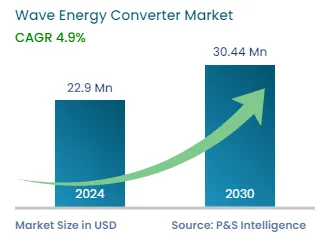
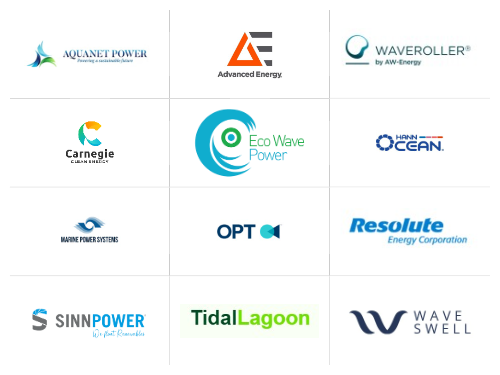
|
Explore the market potential with our data-driven report
The wave energy converter market revenue was USD 22.9 million in 2024, and it is expected to witness a CAGR of 4.9% from 2025 to 2032, reaching USD 33.2 million in 2032.
This is primarily ascribed to the rising demand for electricity from renewable sources and their low environmental impact. Moreover, the increased access to the power contained in ocean waves and the rise in research and development activities are expected to boost the industry growth.
Furthermore, the innovative developments in the use of renewable resources, the increasing electricity demand from the marine and construction sectors, and the rising investments and government initiatives in the renewable sector are projected to propel the demand for energy converters. In addition, the simple nature and high reliability of these systems, as they do not have moving parts, are also boosting the market growth.
The growing focus on minimizing carbon emissions and improving the environment will propel renewable electricity generation. Governments of various countries have established electricity plants to generate power from renewable sources. This is due to the rapid depiction of non-renewable resources and the less capital requirement than gas and oil plants. Moreover, governments are focusing on the advancement of the wave energy technology by providing funding to the companies that are involved in it.
For instance, in September 2024, the U.S. Department of Energy (DoE) announced an investment of USD 16.7 million to accelerate the growth of power innovation and technology, which will also include development of wave energy converter technology. The same month, the DoE’s Water Power Technologies Office (WPTO) invested USD 112.5 million for the advancement in the commercial readiness of wave energy technology through open water testing and system validation.
The oscillating body category holds the largest share, owing to its small size, high operating efficiency, and reliability. This technology exploits the more powerful wave regimes, usually in deep waters. These are more complicated than oscillating water columns, with respect to the power take-off systems. Also, the small size and floating nature of oscillating body converters make them very versatile.
The oscillating water column category, based on technology, is expected to show the highest CAGR, of 5.4%, during the forecast period. This can be attributed to factors including low maintenance, an enhanced lifetime of the material, and easy access near the shores. It is easy to construct and designed through a Wells turbine with the use of the natural flow of wind energy, which, in turn, does not generate greenhouse gas emissions, making it a non-polluting and renewable source of electricity. Also, its main moving component, the turbine, is easy to remove for repair to the shoreline.
Additionally, the OWC technology has a relatively low environmental impact, due to which governments around the globe promote their integration by providing subsidies, grants, and favorable policy incentives.
Based on technology, the market has the following categories:
The nearshore location category accounts for a larger revenue share of 45%, in 2024. owing to its low cost and small size. Moreover, nearshore installations operate with higher efficiency than other locations and are widely used for electricity generation and desalination.
Offshore category will grow at the higher CAGR of 5.1%, during the forecast period. This is due to the rapid advancement in offshore technologies, such as floating platforms, and overtopping devices. This is because offshore locations have many advantages such as they offer more reliable renewable sources and do not emit environmental pollutants or greenhouse gases. Also, a small increase in the speed of wind can generate a large quantity of power in these locations. Additionally, offshore locations, such as deeper waters, have a greater wave energy potential compared to nearshore and shoreline areas.
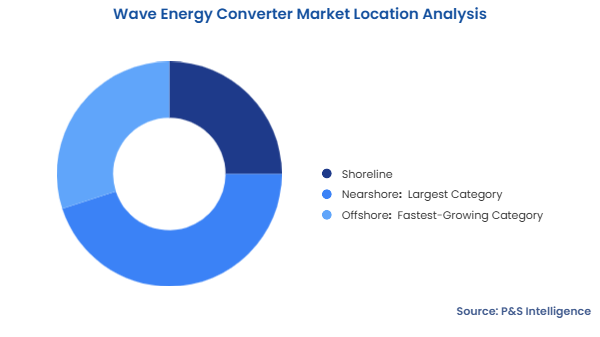
Based on location, the market has the following categories:
The power generation category held a major revenue share of 65%, in 2024. This is ascribed to the rising demand for electricity from coastal communities, reducing dependency on fossil fuels for electricity generation, and the presence of an abundant and clean source of energy.
In February 2025, Eco Wave Power Global AB initiated critical infrastructure enhancements in its wave energy project in Porto, Portugal, where it is implementing its first 1-MW project.
The desalination category will grow at the highest CAGR, of 5.5%, during the forecast period. This is due to the growing demand for sustainable water sources, especially in regions with extreme weather conditions and a general scarcity of freshwater, especially the Middle East.
Based on application, the market has the following categories:
Drive strategic growth with comprehensive market analysis
Europe held the largest revenue share of 40%, in 2024. This is because various transformation devices are completely executed and adopted in Europe, due to the presence of different endeavors that participated in the R&D of wave energy converters. In September 2024, The ONDEP project has awarded EUR 19 million under the EU’s Horizon Europe funding program for the deployment of a 2-MW wave energy array featuring four WaveRoller wave energy converters.
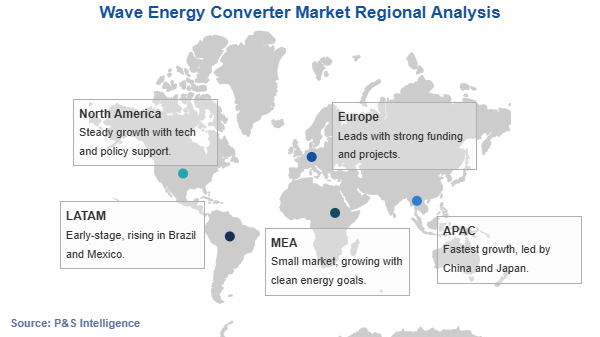
According to the EU Offshore Renewable Energy Strategy, Europe has set a target of 40 GW of electricity from oceans by 2050, which includes tidal, wave, floating solar, and ocean thermal technologies. In November 2024, Scottish ocean energy company Mocean Energy initiated a crowdfunding campaign on Crowdcube, to advance its wave energy technology.
The standard of living in European countries is good yet has cold weather the entire year. Due to this, the electricity demand gradually increases in the region. To cut carbon emissions from electrical energy generation activities, European nations place a high emphasis on sustainable power generation technologies.
The APAC region will grow at the higher CAGR of 5.2%, during the forecast period. The APAC region has a large wave energy potential as it has the world’s longest coastline, led by Australia, Japan, South Korea, and India. Additionally, with the rise in the demand for renewable energy due to the rising energy consumption, environmental concerns, and growing populations, countries in the APAC region are exploring this resource.
Based on geography, the market has the following categories:
Want a report tailored exactly to your business need?
Request CustomizationLeading companies across industries trust us to deliver data-driven insights and innovative solutions for their most critical decisions. From data-driven strategies to actionable insights, we empower the decision-makers who shape industries and define the future. From Fortune 500 companies to innovative startups, we are proud to partner with organisations that drive progress in their industries.

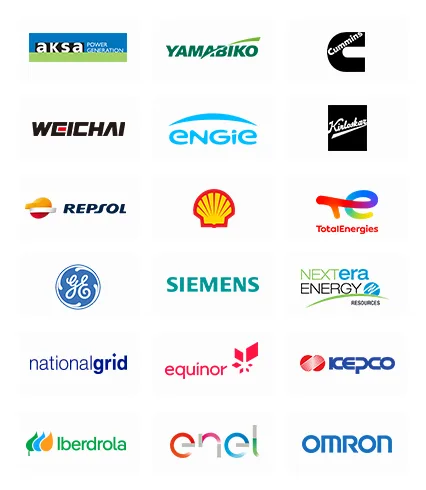
Working with P&S Intelligence and their team was an absolute pleasure – their awareness of timelines and commitment to value greatly contributed to our project's success. Eagerly anticipating future collaborations.
McKinsey & Company
IndiaOur insights into the minutest levels of the markets, including the latest trends and competitive landscape, give you all the answers you need to take your business to new heights
We take a cautious approach to protecting your personal and confidential information. Trust is the strongest bond that connects us and our clients, and trust we build by complying with all international and domestic data protection and privacy laws
Customize the Report to Align with Your Business Objectives
Request the Free Sample Pages